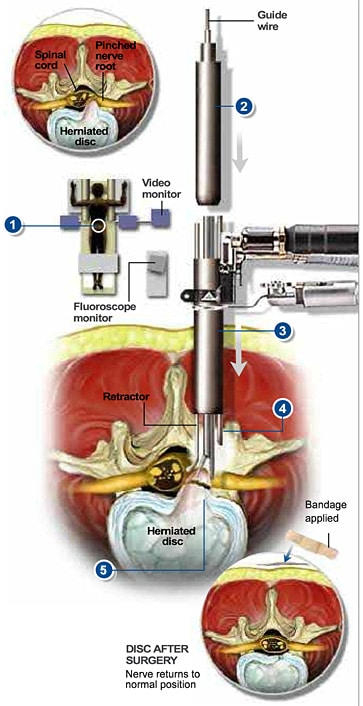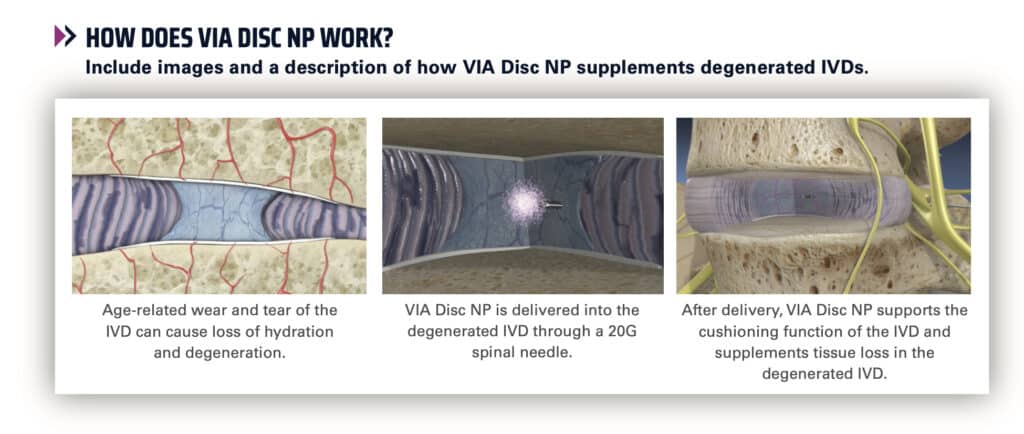Micro Endoscopic Discectomy
A micro endoscopic discectomy is a minimally invasive procedure designed to relieve pain caused by a herniated disc pressing on a nerve root. See the top-left illustration. You can have this procedure done at the Southeastern Spine Institute (SSI) as a same-day surgery.
For this operation, your back surgeon uses a tubular retractor system and a microendoscope to guide his or her movements and perform the operation. A micro endoscopic discectomy is effective in relieving radiculopathy that usually compromises a root nerve.
OVERVIEW
Your back doctor performs this minimally invasive surgical procedure with a tubular device, through which he or she inserts the instruments and tools he needs. Because the incision required for this procedure is small, the surgery can be done on an outpatient basis, so you can return home the same day to recuperate. The procedure is detailed below. Talk to your surgeon about the risks, as well as what you can expect from the recovery.
 1. INSERTING THE GUIDE WIRE
1. INSERTING THE GUIDE WIRE
Your doctor inserts a guide wire through a small incision to locate the affected disc in your spine. He or she uses a fluoroscope, which displays live X-ray images, to ensure that he lines up the route to the correct herniated disc. See illustration 1.
2. INSERTING THE DILATING TUBES
As shown in illustration 2, the surgeon passes a series of dilating tubes over the guide wire, pushing apart the tissue to get to your vertebrae. Once he or she has access to the herniated disc, the surgeon removes the guide wire.
3. INSERTING THE RETRACTOR
The tubular retractor, through which your doctor will perform the surgery, slides over the dilating tubes. Refer to illustration 3. The physician positions it on the bone surface. Then he or she removes all the dilating tubes.
4. INSERTING THE INSTRUMENTS
A surgical light and small camera allow your doctor to see through the tube. He or she uses special surgical instruments, passed through the tube, to clear away bone and soft tissue to gain access to your spinal canal, as shown in illustration 4.
5. MOVING THE SPINAL NERVE
The surgeon uses a nerve retractor to gently move the nerve away from the herniated disc. Again, see illustration 4.
6. CLEARING THE HERNIATED PORTION OF THE DISC
Using small surgical instruments passed through the tubular retractor, your doctor removes the herniated portion of the disc, as shown in illustration 5. He or she then clears the area enough to allow the nerve to move back into its normal position.
7. RECOVERING FROM THE PROCEDURE
The surgeon withdraws the tubular retractor, which allows your body tissue to close around the surgery site. Because the incision is small for a micro endoscopic discectomy, you need only a small bandage to close the surface wound.
While you can return home after an observation period, you still must rest and heal. As your surgery wound heals, you can return to normal daily activities around the house. Depending on your occupation, you may be allowed to return to work within one or two weeks.
SURGICAL PROCEDURES

